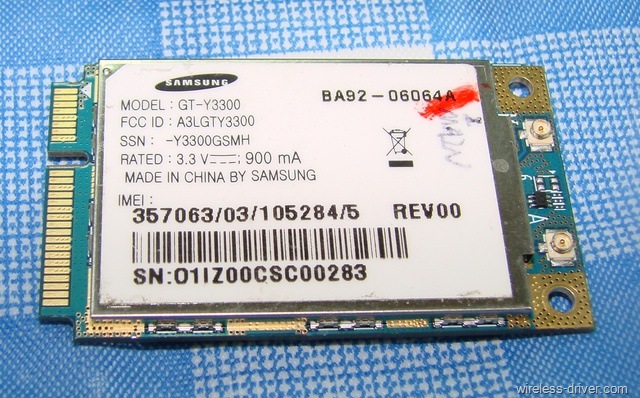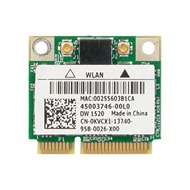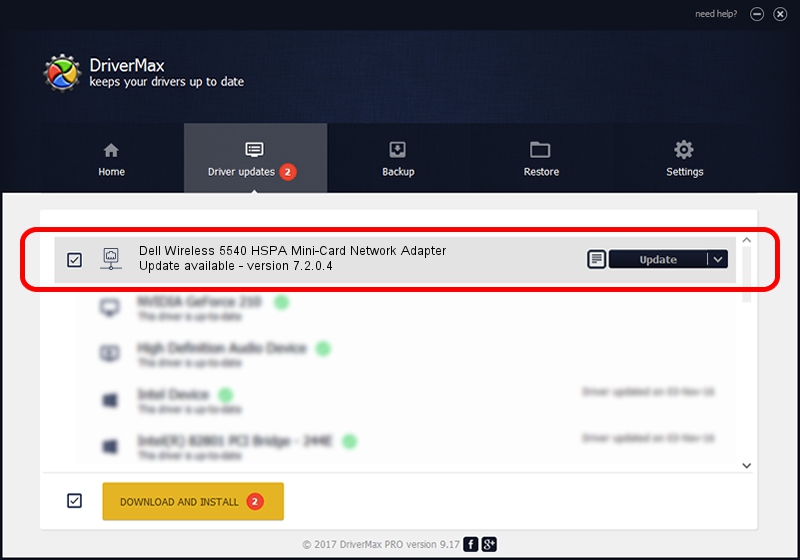Hspa Network & Wireless Cards Driver Download
- These enhancements are collectively termed as High-Speed Packet Access or HSPA. HSPA is shown on your mobile as the ‘H’ symbol and it can offer peak downlink and uplink speeds of up to 14.4 Mbps and 5.76 Mbps respectively. As the average speeds are lower than peak-speeds, in today’s world, you generally need at least HSPA to be able to perform your online tasks on the cell phone.
- Dell Wireless 5542 HSPA Mini-Card Network Adapter. Dell Wireless 5542 HSPA Mini-Card USIM Port. Dell Wireless 5550 HSPA+ Mini-Card Data Modem.
- High speed packet access, HSPA is an upgrade to 3G UMTS to provide very high higher data rates in both uplink and downlink. 3H HSPA includes: 3G HSPA introduction HSDPA HSDPA channels HSDPA categories HSUPA HSUPA categories HSUPA channels Evolved HSPA (HSPA+) Dual carrier HSPA.
- Hspa Network & Wireless Cards Driver Download Windows 7
- Hspa Network & Wireless Cards Driver Download 64-bit
- Hspa Network At&t
If you own a smartphone, you undoubtedly have heard the terms 3G, 4G, and LTE. Cellular providers such as AT&T and Verizon continuously advertise they have biggest or fastest 4G network or LTE network. It’s difficult to understand how each company can make those claims. However, when buying a new smartphone, it is important to understand the difference. The type of data network can directly impact the performance of your smartphone.
When you buy a smartphone, you are typically required to sign up for a service plan that defines a certain amount of calling minutes and data usage. Once connected to the cellular provider’s network, the smartphone can communicate with the outside world to support features such as email, maps, and Internet browsing. Many of the smartphone apps rely on sending and receiving data across the network.
I don't even see the HP hs2350 HSPA + Mobile Broadband adapter showing up in the device manager under the Network Adapters device manager category. That is where it should be located. I think it was turned off during the upgrade to W10 by the connection manager.
When describing smartphone data networks, you commonly hear the terms 3G, 4G, and LTE. This refers to the generation of network technology. The third generation network, known as 3G, is the oldest technology of the group. 4G is the fourth generation data network and LTE stands for Long Term Evolution. The basic difference between them is the speed of the network. When selecting a smartphone, the older models may not support the newer data network technology. It is important to select a model that supports a data speed appropriate for your needs.
3G Network

The 3G network was the first technology with sufficient speed to provide a decent user experience on a smartphone. There were some smartphones that used the older 2G EDGE technology, but the data speeds were slow and the user spent a lot of time waiting for data to load.
Each of the major cellular providers have 3G networks that provide coverage across most of the country. There are two competing 3G technologies currently being used: Global System for Mobiles (GSM) and Code Division Multiple Access (CDMA). AT&T and T-Mobile use the GSM technology while Verizon and Sprint use the CDMA technology. Since the technologies are not compatible with each other, this is the reason you can’t use a Verizon phone on an AT&T network (or vice versa).
4G and LTE
The 4G technology is the successor to the 3G technology. Cellular providers are still building out their 4G networks. Theoretically, 4G is much faster than 3G. But before we start comparing 4G speed to 3G speed, it is important to understand there are different versions of 4G.
Hspa Network & Wireless Cards Driver Download Windows 7
When talking about 4G, things can get a little confusing. Basically, there is 4G and 4G LTE. Many people consider LTE to be true 4G technology. Generally, if a cellular provider describes a 4G network without mentioning LTE, they are probably talking about a High Speed Packet Access (HSPA) network. The HSPA network is a faster version of the 3G GSM network. While not as fast as an LTE network, it is still faster than a 3G network. Since LTE is still relatively new, the cellular providers haven’t fully built out their LTE networks yet. Be careful when looking at the network coverage maps on the providers’ websites. Some companies claim to have broad nationwide 4G coverage. They may really be talking about HSPA coverage and not LTE coverage.
In theory, LTE can be up to ten times faster than 3G. In practice, the actual network speed will vary based on network load and signal strength. Even if LTE does not meet its theoretical speed, it is still much faster than 3G. Activities that require large amounts of data, such as streaming movies, work very well on an LTE network. If you plan to perform a lot of data-hungry activities or simply want the best performance when surfing the Internet, you should really plan on buying a smartphone that supports LTE.
What iPhone Models Support LTE?

Hspa Network & Wireless Cards Driver Download 64-bit
If you are considering buying an iPhone, you will find five models available: iPhone 6s Plus, iPhone 6s, iPhone 6 Plus, iPhone 6, and the iPhone 5s. All these models support LTE. The iPhone 5 was the first model to support LTE and all models newer than the iPhone 5 support LTE. The iPhone models prior to the iPhone 5 do not support LTE. The iPhone 4s supports HSPA, which some cellular carriers call 4G. The iPhone 4 will only support 3G networks.

This page on the Apple website compares all the current iPhone models.
When buying a new smartphone, don’t be fooled by all the marketing hype about 4G and LTE networks. Understand the different network technologies available and try using the Internet on the smartphone before you buy. The LTE technology provides the fastest cellular data network available and the speed difference between LTE, 4G (HSPA), and 3G can be quite noticeable.
Hspa Network At&t
Sign Up for the Free iAnswerGuy Monthly Newsletter
